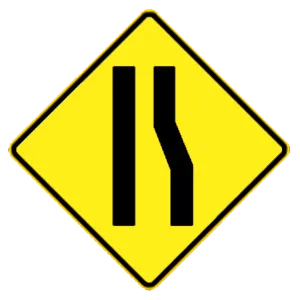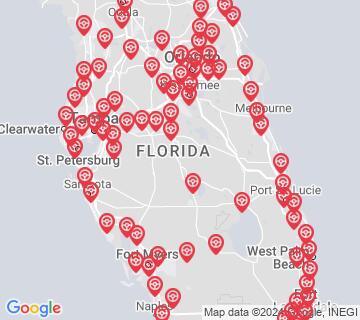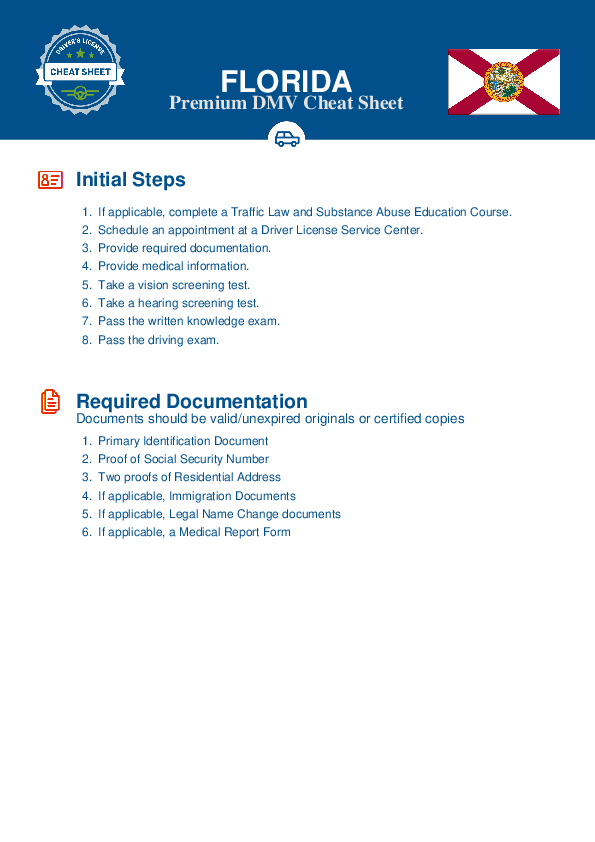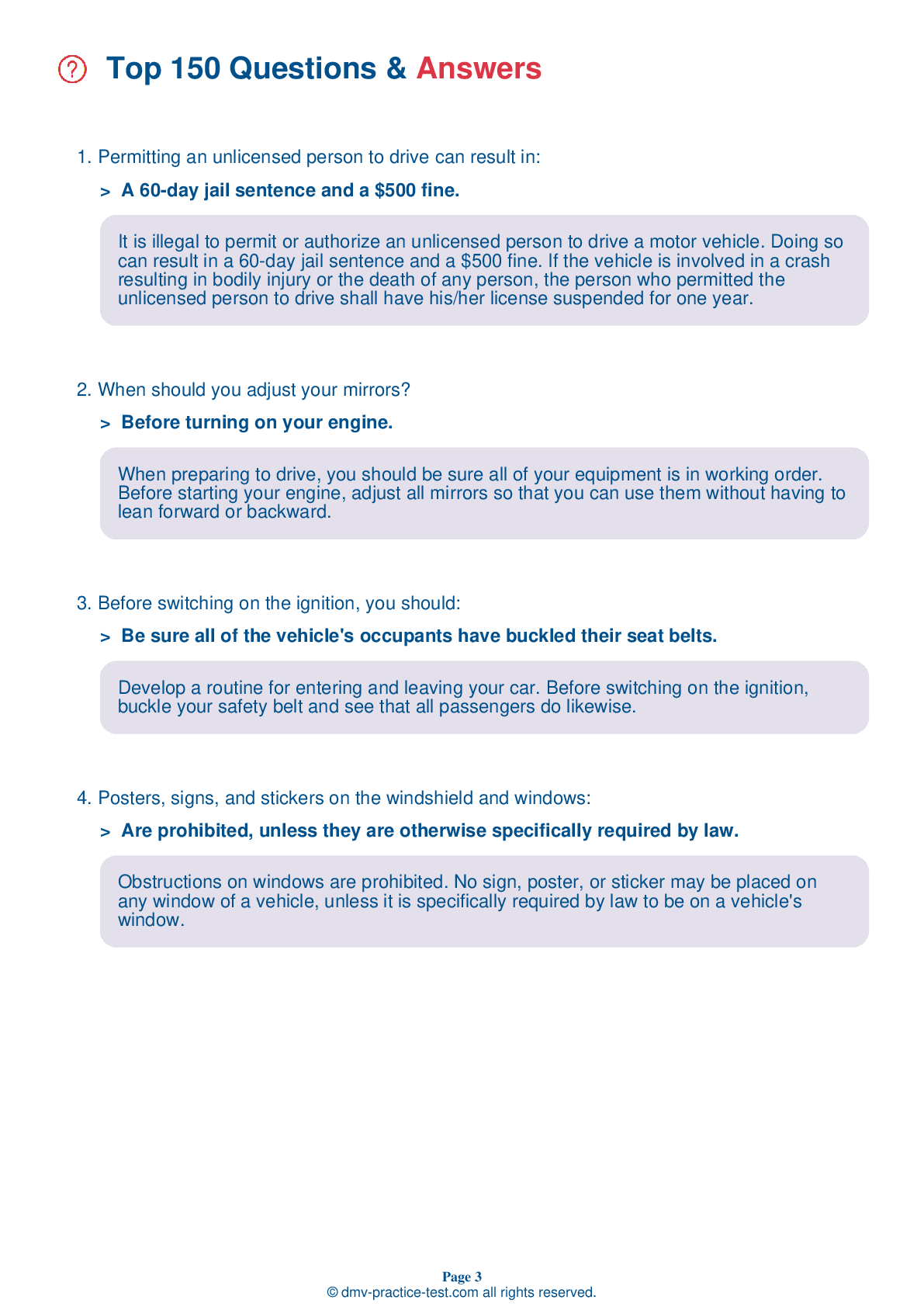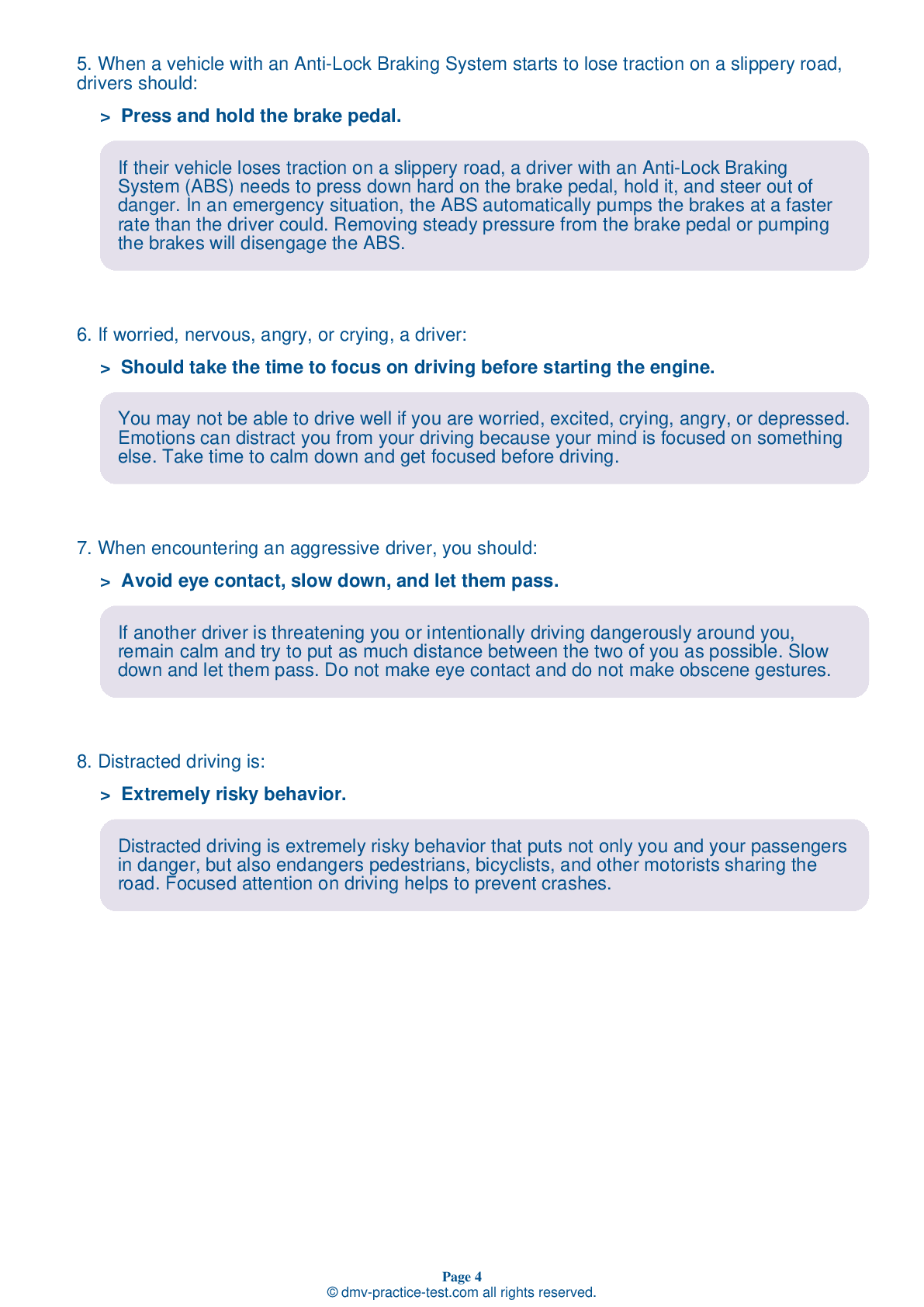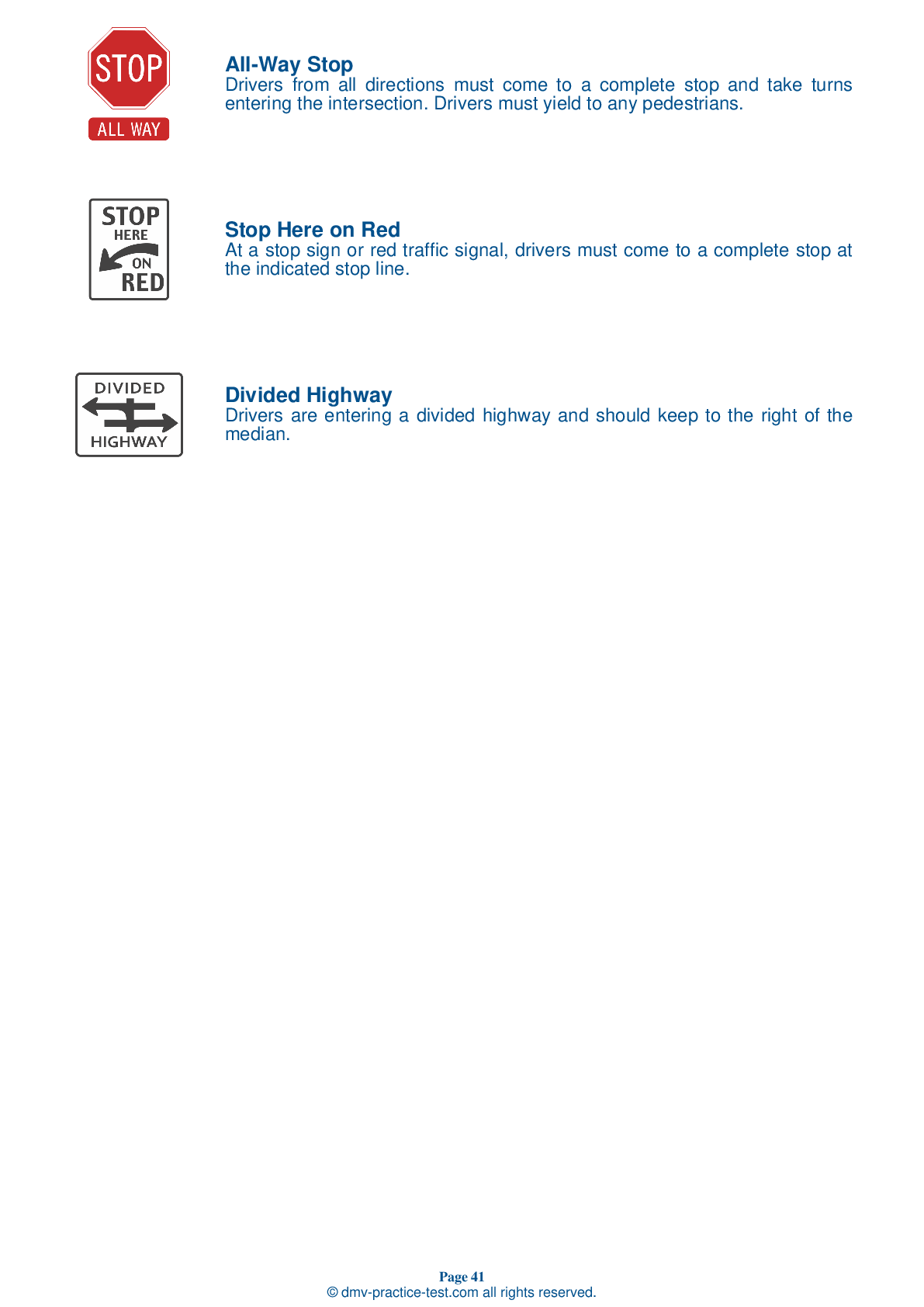FREE Florida DMV Practice Test #22 Page 7 of 7
This set of DMV practise tests for the Florida has been updated for January 2025. It includes questions based on the most important traffic signs and laws for 2025 from the Florida Driver Handbook. To study for the DMV driving permit test and driver's licence exam, use actual questions that are very similar (often identical!) to the DMV driving permit test and driver's licence exam.
Each question on the practise exam has a tip and explanation to help you recall the ideas. Questions about traffic rules, traffic signs, and driving statutes, as well as information from the Driver Handbook, will be included in the written portion of the official DMV test.
You must properly answer 40 of the 50 questions to receive the required passing mark. To help you prepare for your Florida instruction permit or driver's licence, take our DMV practise test.
The DMV exam is offered in a variety of languages.
Using any kind of testing assistance will result in an automatic fail, and the DMV may take additional action against your driver's licence, so stay away from it.
43 . This road sign means:
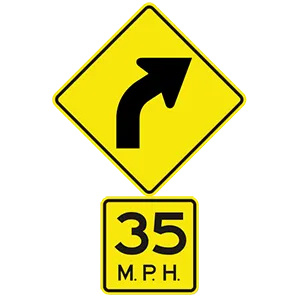
These signs indicate that the road curves to the right ahead and that drivers should slow down to the safe speed indicated (in this case, 35 mph).
44 . This sign means:

Warning signs are used to warn drivers about upcoming hazardous conditions and are usually yellow with black markings. This sign warns drivers that an upcoming bridge may be too narrow to meet or pass a truck and that they should be careful.
45 . When driving under icy or snowy conditions, which driving technique will help drivers avoid crashes?
Reduce your speed when roads are snow-covered or icy. Doing this and increasing your following distance are the most important techniques for avoiding crashes under snowy or icy conditions.
46 . When driving to an unfamiliar area, you:
When driving to an unfamiliar area, plan your trip in advance. Don’t start with only a hazy idea of where you are going. If your destination is in an unfamiliar area, check the location on a map before you start to drive.
47 . What does this road sign mean?

A stop sign means that you must come to a full stop and yield the right-of-way to vehicles and pedestrians in or heading toward the intersection. Go again when it is safe.
48 . If you need to drive in foggy weather:
You are required to use your headlights during the day when visibility is reduced to 500 feet or less. When you first turn on your headlights, be sure they are adjusted to the low beam setting. Using high beams in fog or rain will cause the light to reflect back into your eyes, lowering visibility even more.
49 . Increase your following distance when:
You should increase your following distance when you are behind a large vehicle that blocks your vision, when driving in bad weather or heavy traffic, when exiting an expressway, when behind a motorcycle or bicycle, and if someone is tailgating you.
50 . This sign means:
